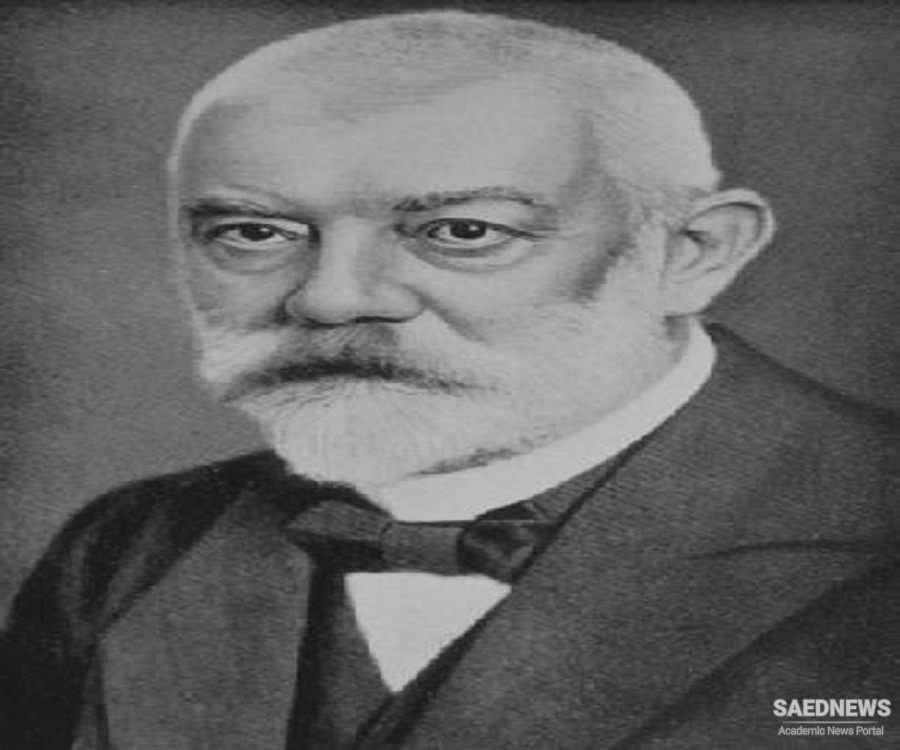Hertel studied in the University of Leipzig and obtained his Ph.D. in 1897 with a thesis titled Text und Verfasser des Hitopadeśa. After teaching at Gymnasia in Zwickau and Doebeln, he succeeded Ernst Windisch to the chair of Indology at the University of Leipzig in 1919. He was married and the father of eight children. Hertel’s lasting contributions to scholarship are his earlier works on Sanskrit narrative literature and its transmission. They culminated in the publication of a four-volume edition of the Pañcatantra in the Harvard Oriental Series, vols. 11-14 (1908-15). After his appointment to the Indology chair in Leipzig, he turned to Vedic studies and, from 1924, to Avestan. Most of his works on Vedic and Avestan subjects appeared in the series edited by himself, Indo-Iranische Quellen und Forschungen (IIQF). Apart from one short article on the migrations of the Indo-Europeans (Archiv Orientalní 19, 1951, pp. 207-12), the flow of Hertel’s publications ceased after 1938.
Hertel’s interpretation of Vedic and Avestan texts is based on a theory he developed from 1924. The theory posited an ancient system of belief, which he traced back to Indo-European times, according to which fire encompassed the world and radiated into every individual being. Fire was regarded as immanent, not only in heaven, earth, mountains, human beings, animals, and plants, but also in abstract notions and even objects such as weapons. Each living being was animated by one of the two contrasting internal fires, one of them good, heavenly, light, warm, and “venerable” (yazata-), the other one evil, hellish, dark, cold, and demonic (daēva-). Cosmic history would consist of a continuous struggle, which took place in such a way that light and dark creations “shone” (strahlen) against one another by means of their respective internal “luminous” (hell) and “non-luminous” (dunkel) fires, which functioned as their weapons. The creatures of light, so the theory goes, were aiming at destroying the dark creatures by means of their light (Überstrahlung, rendering Av. tarōidīti-), against which the dark creatures “shone” with their non-luminous light (Gegenstrahlung, rendering Av. paityāra-). The purpose of the Yasna ritual of the Zoroastrians was to summon all the creatures of light and set all luminous fire against the powers of darkness. There were good and evil immortal, spiritual (mainyava-) and mortal, physical (gaēiθya-, astvaṇt-) beings, shining with either luminous or non-luminous fires. Moreover, physical beings contained an admixture of matter, which rendered them mortal. At death they would lose their earthly admixture; and each individual, as a purely spiritual being, would join the heavenly or hellish places of their respective internal fires (Die Sonne und Mithra im Awesta, 1927, pp. 9-13, 34; Barnett, 1928).
Hertel considered his theory of the ancient Aryan world-view, which would have to have been overlooked by previous translators, as his greatest discovery and contribution to Indo-Iranian scholarship. He thought that it provided the key to understanding the Avesta and Veda (Die Methode der arischen Forschung, 1926, p. 15). His monographs (predominantly semantic studies of individual Avestan words and translations of texts) published between 1924 and 1931 were intended as preliminary works towards a comprehensive presentation of the Aryan world-view, as reconstructed by him on the basis of the Avesta, Vedas, and the older Upaniṣads (Die arische Feuerlehre, 1925, pp. 6-10; Die Methode der arischen Forschung, 1926, p. 59). However, he failed to complete their synthesis, which was never published. Hertel’s translations of Avestan texts are done in a manner which serves to bear out his idea of the ancient Aryan world-view. For instance, aṧa-, is rendered as “light of salvation” (Licht-des-Heils) and seen as the embodiment of all good and luminous fire. It would be opposed to the embodiment of the non-luminous fire, druj-, which was identical with nasu- “corpse” and itself to be translated not as “deceit” but as “decomposition” (Verwesung). Aṧavan- would be the “owner of the light of salvation,” vohu- manah- “bright thought” (der helle Gedanke), vahišta- “shining” (leuchtend), aməṧa- spəṇta- “enlightened immortals” (erleuchtete Unsterbliche), garō dəmāna- “the house of glow” (Haus der Glut), and xvāθra- “the place of good fire” (Ort des guten Feuers). The fire in rulers and warriors would be the xvarənah- “fire of the sky or of lightning” (Himmelsfeuer or Blitzfeuer), while that in priests and laypeople would be the daēnā- “fire or light of the heart” (Herzensfeuer or Herzenslicht), which would be the same as cisti- and from which emanated the sacred texts, mąθra- (Die Sonne und Mithra im Awesta, 1927, pp. 13-14, 47 ff., 230). The name zaraθuštra- would mean “owner of glowing camels” (“Besitzer glühender [= Siegesfeuer enthaltender und ausstrahlender] Kamele,” Der Planet Venus im Awesta, 1936, p. 51).
Hertel vehemently criticized the works of scholars such as Chr. Bartholomae and A. V. W. Jackson for using terms either influenced by the Pahlavi authors or, even worse, by Christian culture (for instance, “paradise,” “angel,” “archangel”) or modern European concepts (Die arische Feuerlehre, 1925, pp. 5-9; Die Sonne und Mithra im Awesta, 1927, pp. XXIV ff.). However, Hertel’s theory of the Aryan world-view was controversial already in his own time (Die Methode der arischen Forschung, 1926, pp. 42 ff.; Beiträge zur Erklärung des Awestas und des Vedas, 1929, pp. VII ff.) and has since not been accepted by other scholars. Hertel proposed some felicitous etymologies, in particular that of anāhitā as “the unfettered one” (die Ungefesselte, in Die Sonne und Mithra im Awesta, 1927, p. 22; cf. T. Gotō in B. Forssman and R. Plath, eds., Indoarisch, Iranisch und die Indogermanistik, Wiesbaden, 2000, pp. 160-61). However, since all his works on Avestan are permeated by this theory and are, moreover, based on the Andreas Theory (q.v.), they are now considered as obsolete.


 Justi's Lexiographical Works
Justi's Lexiographical Works














































